The day before I left, I managed a quick trip to the local Arts Council Gallery for a look at their exhibit entitled History From The Ashes.
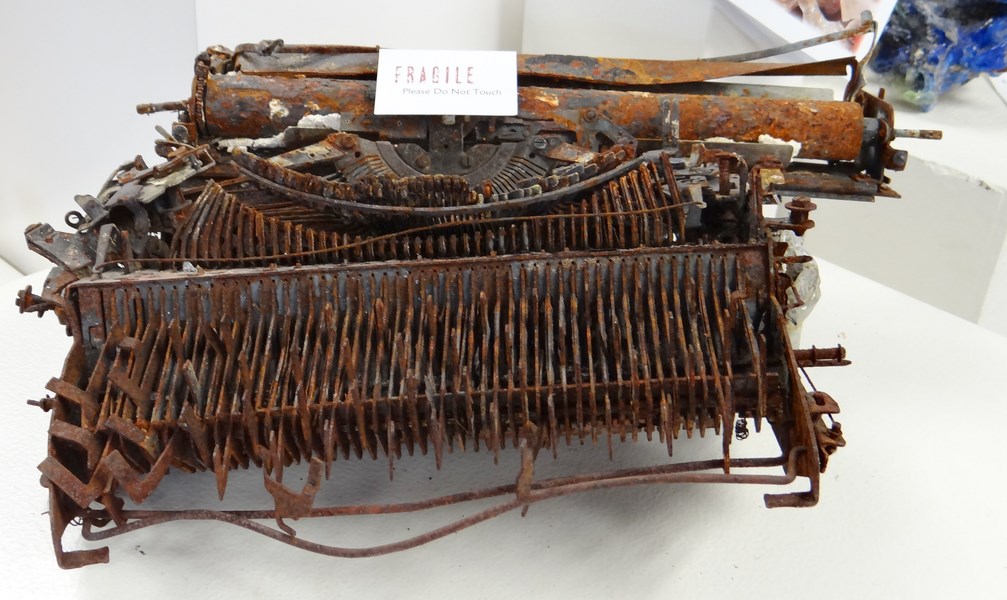
There is no joy in picking up cherished or simply common objects from your burned out property. Mostly sadness, tears and awe that anything recognizable survived the conflagration.
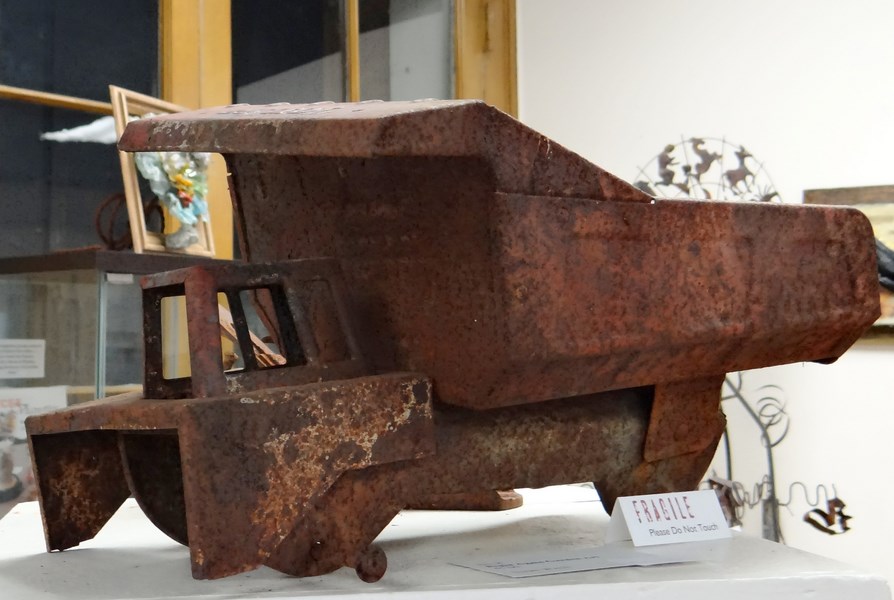
We know art is healing. And there is something about picking through the ashes that must be common to all of us. I watched on television as folks did just that after Katrina. The flood, destroyed as completely as fire.
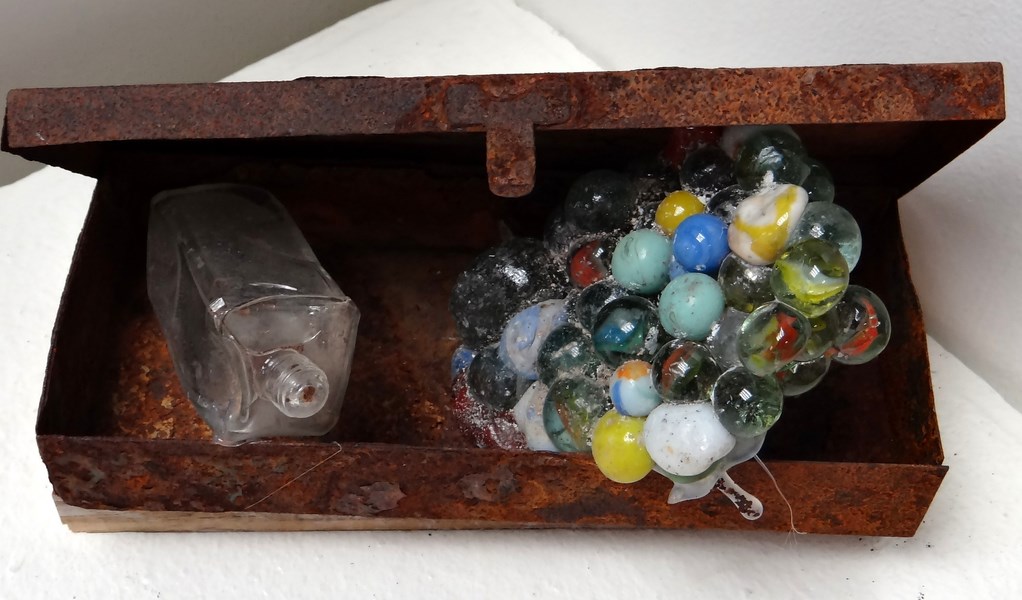 When
my house burned to the ground in Michigan, I remember finding my
melted marbles and my mother's jar full of precious coins. The wafts of
smoke coming from the ashes, the strong smell, the bent bed springs and
melted cook stove didn't make me give up hope that I might find a heart
shaped plastic locket my grandmother gave me that contained a tiny
rosary. Of course, it couldn't possibly survive, but my 8 year self
believed in miracles.
When
my house burned to the ground in Michigan, I remember finding my
melted marbles and my mother's jar full of precious coins. The wafts of
smoke coming from the ashes, the strong smell, the bent bed springs and
melted cook stove didn't make me give up hope that I might find a heart
shaped plastic locket my grandmother gave me that contained a tiny
rosary. Of course, it couldn't possibly survive, but my 8 year self
believed in miracles.
Items found, were given an artful setting of remembrance.

Or put together to form a sculpture or a mobile.
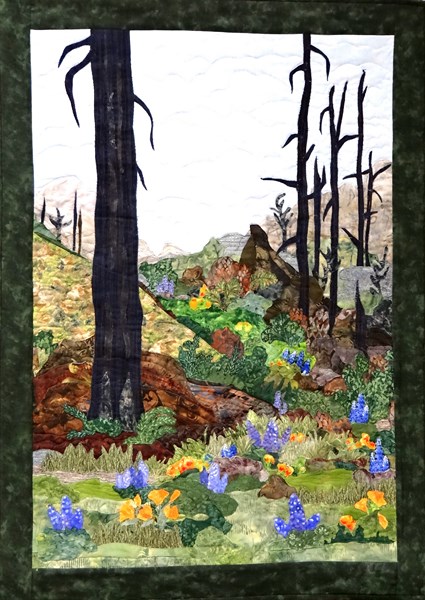
One survivor made a fabric wall hanging, with burned out spars of trees surrounded by wild flowers. A reality, wild flowers, rain fed, follow a burn.
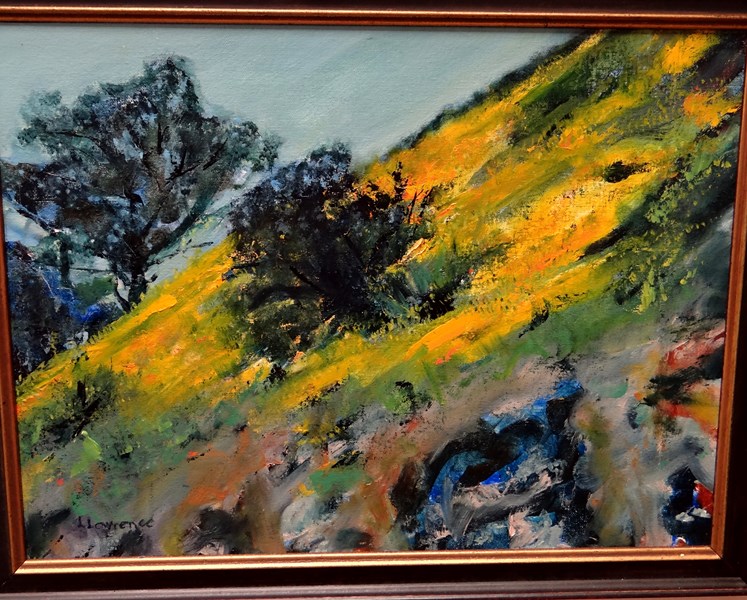
Dead bushes and trees amid new grass on this canvas.
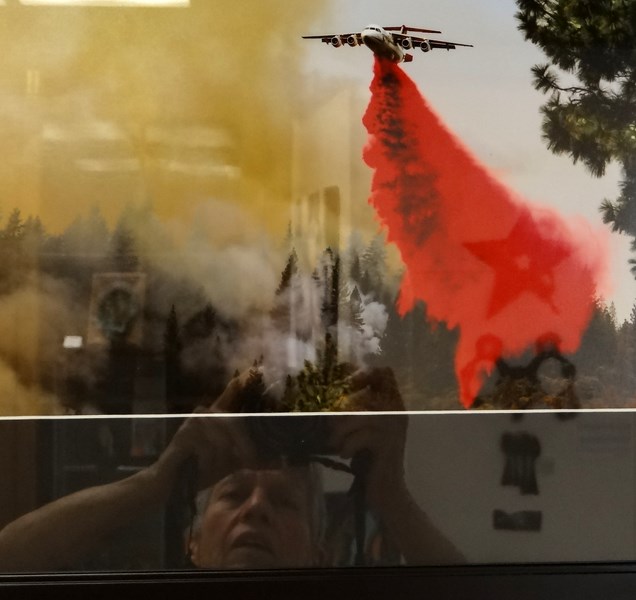
You can see my face reflected in the glass covering a spectacular photo by John Slot of the borate bomber releasing its chemical fire retardant.
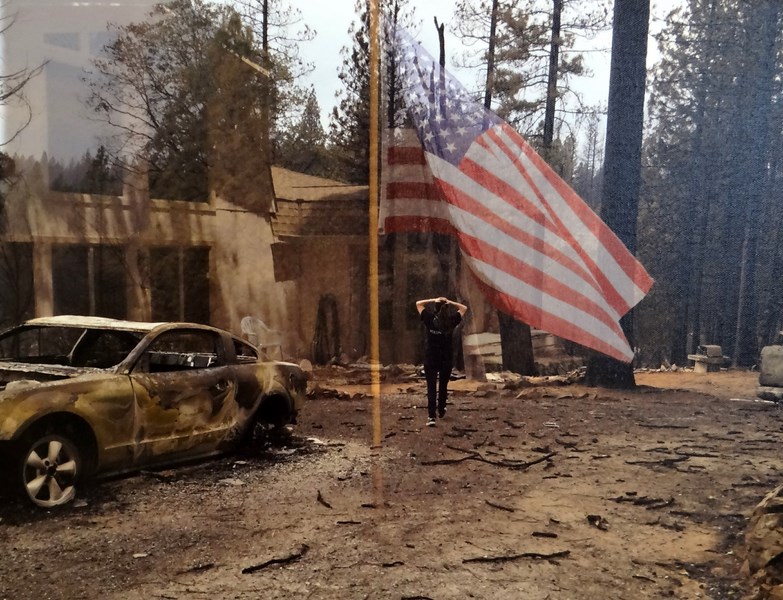
And this photo by Katie Clark of a partially burned home with a surviving flag.

The most spectacular piece in the show is this shawl, positioned like an effigy with burned offerings at its feet. The shawl was made from the ties that bound hay bales distributed to land owners. Hay spread on bare ground, an effort to help prevent erosion. This artist washed and dyed the pieces. She softened them enough for weaving and wove this shawl.
It is a good feeling that something pretty, or remembered or useful rises from the ashes of despair and we can all see through to their recovery and healing, as art surpasses the ashes.
No comments:
Post a Comment